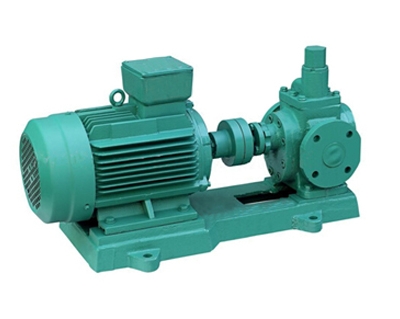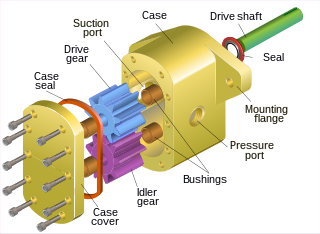Product Description
WORM AND GEAR FOR MS660 MS650 066 (1998 ON) –
| FIT FOR | MS660 MS650 066 |
| OEM |
Other Products:
OUTDOOR POWER EQUIPTMENT MACHINERY PART like Air filter, oil filter, Fuel Pump, fuel filter, fuel hose, carburetor, blade, trimmer line, trimmer head, CHINAMFG starter, Cylinder Piston kit, Starter Motor, Saw Chain, Xihu (West Lake) Dis. Bar, Chain saw Grinder, Chain File,Pulley & Idle, Electric PTO clutch, Mandrels Quills, Spindle Housing Shaft Assembly, V Belt, Hex Kevlar V Belt, Starter Motor &Electric PTO Clutch & Solenoid Switch, , Lawn & Garden Tubeless Tire, Tire Tube, Snow Mud Turf Wheel, Farm & Golf Tubeless Tire, PU Rubber Foam Tire, Parts Washer & Ultrasonic Cleaner, Carby Carburetor etc
FAQ:
Notice
1. We maintain high standards of customer satisfaction! Your feedback is very important to us. Before giving us neutral or negative feedback, please contact us to satisfactorily address your concerns.
2. Please compare the good’s appearance, shape, size with your original parts before ordering.
3. Due to the different color resolution settings of the display, the CHINAMFG may have a color difference, please know it.
4. All our products are non-assembled, pictures are for reference only.
Problem with An Order?
We work hard to get everything right but mistakes happen and we want to fix them quickly, please ask any questions using the Made-in-China system before starting a dispute.
Feedback
We maintain high standards of CHINAMFG and strive for 100% customer satisfaction! If you are not satisfied with our products or services please contact us first, sincerely hope through our cooperation, we can resolve the problems smoothly.
About Us
We do retail and wholesale for gasoline chainsaw, brush cutter, grass trimmer, and other garden tool parts. Welcome here to pick out and buy.
Contact
If you have questions or problems please leave messages, we will reply to you as soon as possible.
/* March 10, 2571 17:59:20 */!function(){function s(e,r){var a,o={};try{e&&e.split(“,”).forEach(function(e,t){e&&(a=e.match(/(.*?):(.*)$/))&&1
| Certification: | RoHS, CE, ISO, CCC |
|---|---|
| Power Source: | Gasoline |
| Type: | Chainsaw Parts |
| Fit for: | Ms660 Ms650 066 Chainsaw |
| OEM: | 1122 640 7105 + 1122 647 2401 |
| Transport Package: | Color Box |
| Samples: |
US$ 3/Piece
1 Piece(Min.Order) | |
|---|
| Customization: |
Available
| Customized Request |
|---|

How does a gear pump handle variations in temperature and environment?
A gear pump is designed to handle variations in temperature and environment effectively. Here’s a detailed explanation:
1. Temperature Resistance:
Gear pumps are typically constructed using materials that offer good temperature resistance. Common materials include stainless steel, cast iron, and bronze, which can withstand a wide range of temperatures. The pump’s components, such as gears, shafts, and housing, are carefully selected to ensure they can operate reliably in both high and low temperature environments.
2. Thermal Expansion Compensation:
Gear pumps are designed to accommodate thermal expansion that occurs due to temperature variations. The materials used and the construction of the pump allow for expansion and contraction without compromising the pump’s integrity. This ensures that the pump maintains its performance and efficiency even when subjected to temperature fluctuations.
3. Lubrication:
Proper lubrication is essential for gear pumps to handle temperature variations. Lubricants with appropriate viscosity and temperature ratings are used to ensure smooth operation and prevent excessive wear or damage to the gears and other moving parts. Lubrication helps reduce friction and dissipate heat generated during operation, contributing to the pump’s ability to handle temperature variations effectively.
4. Environmental Sealing:
Gear pumps are designed with effective environmental sealing to protect the internal components from external elements. Seals and gaskets are used to prevent the ingress of dust, dirt, moisture, and other contaminants into the pump. This helps maintain the pump’s performance and prevents any adverse effects caused by environmental factors.
5. Corrosion Resistance:
For gear pumps used in environments with corrosive substances or high humidity, corrosion-resistant materials or protective coatings are employed. These materials prevent corrosion and ensure the longevity and reliability of the pump, even in harsh environments.
6. Ventilation and Cooling:
In applications where the gear pump is exposed to elevated temperatures, proper ventilation and cooling mechanisms are employed. This may include the use of cooling fans, heat sinks, or heat exchangers to dissipate excess heat and maintain the pump’s operating temperature within safe limits.
7. Environmental Factors:
When selecting a gear pump for a specific application, consideration is given to the environmental factors that may affect its performance. Factors such as humidity, dust levels, chemical exposure, or outdoor conditions are taken into account to ensure that the chosen gear pump is suitable for the given environment and can handle the variations effectively.
In summary, gear pumps are designed to handle variations in temperature and environment through the use of temperature-resistant materials, thermal expansion compensation, proper lubrication, environmental sealing, corrosion resistance, ventilation and cooling mechanisms, and consideration of environmental factors. These features enable gear pumps to maintain their performance and reliability even in challenging operating conditions.

Can gear pumps be used for both liquid and gas pumping?
Gear pumps are primarily designed for liquid pumping and are not typically used for pumping gases. Here’s a detailed explanation:
1. Liquid Pumping:
Gear pumps are widely used for pumping various types of liquids, including water, oils, fuels, chemicals, and viscous fluids. The positive displacement action of gear pumps allows them to efficiently move liquids by trapping and displacing a fixed volume of fluid with each revolution of the gears. The close tolerances between the gear teeth and the pump housing help minimize leakage and ensure effective liquid transfer.
2. Gas Pumping:
Unlike liquids, gases are highly compressible and have significantly lower densities. The design and operation of gear pumps are not well-suited for pumping gases due to the following reasons:
- Compression: Gear pumps are not designed to compress gases. When a gas is introduced into the pump’s chamber, it will compress as the gears rotate, leading to increased pressure and reduced volume. This can cause excessive strain on the pump and its components, potentially leading to damage or failure.
- Leakage: Gear pumps rely on close tolerances and tight clearances to minimize leakage in liquid applications. However, these tight clearances are not effective for handling gases, which can easily leak through the small gaps between the gear teeth and the pump housing. This leakage can result in poor efficiency and loss of pumping performance.
- Flow Characteristics: Gases have different flow characteristics compared to liquids. Gear pumps are specifically designed to handle the viscosity and flow properties of liquids, including their lubricating properties. Gases lack these characteristics, and the gear pump’s design may not provide the necessary sealing and lubrication required for efficient gas pumping.
3. Alternative Technologies:
For gas pumping applications, other types of pumps are typically used, such as centrifugal pumps, diaphragm pumps, rotary vane pumps, or specialized gas pumps. These pumps are specifically designed to handle the unique properties of gases, including their compressibility and low density. They incorporate features like gas-tight seals, variable displacement mechanisms, and specialized materials to ensure efficient and reliable gas transfer.
In summary, gear pumps are primarily designed for liquid pumping applications. While they excel at efficiently transferring liquids, their design characteristics and limitations make them unsuitable for pumping gases. For gas pumping, it is recommended to use pumps specifically designed for handling gases to ensure optimal performance and reliability.

What are the advantages of using gear pumps for fluid transfer?
Gear pumps offer several advantages for fluid transfer applications. Here’s a detailed explanation of the advantages:
1. Positive Displacement:
One of the key advantages of gear pumps is their positive displacement nature. They deliver a fixed volume of fluid for each revolution of the gears, ensuring accurate and consistent flow rates. This feature is particularly beneficial in applications that require precise flow control and metering.
2. Wide Viscosity Range:
Gear pumps can handle a wide range of fluid viscosities, making them versatile for various applications. They can efficiently transfer both low-viscosity fluids, such as water and light oils, as well as higher-viscosity fluids, including heavy oils and lubricants. This flexibility makes gear pumps suitable for industries with diverse fluid handling needs.
3. Self-Priming Capability:
Many gear pumps are self-priming, meaning they can create a vacuum and draw fluid into the pump without the need for external priming. This feature simplifies the setup and operation of the pump, particularly in situations where the pump may be located above the fluid source.
4. Compact and Space-Efficient:
Gear pumps have a relatively compact design and occupy less space compared to other pump types. They consist of fewer components, making them suitable for applications with space constraints or where portability is important. The compact size also facilitates easy installation and integration into existing systems.
5. High Efficiency:
Gear pumps are known for their high efficiency, especially at lower flow rates and higher pressures. They can achieve high volumetric efficiency due to the positive engagement of the gears, resulting in minimal internal slippage and leakage. This efficiency translates to reduced energy consumption and operating costs.
6. Reliable Operation:
Gear pumps are reliable and have a long service life when properly maintained. They have a simple and robust design, with fewer moving parts compared to other pump types. This design minimizes the risk of mechanical failure and reduces the need for frequent repairs or replacements.
7. Cost-Effective:
Due to their simple design, ease of manufacturing, and widespread availability, gear pumps are often cost-effective compared to other pump technologies. They offer a favorable balance between performance, reliability, and affordability, making them a popular choice in many industries.
8. Versatility:
Gear pumps are versatile and find applications in a wide range of industries and fluid transfer processes. They can handle various liquids, including corrosive and abrasive fluids, chemicals, fuels, lubricants, and more. The ability to accommodate different fluids and viscosities makes gear pumps adaptable to diverse industrial requirements.
In summary, gear pumps offer advantages such as positive displacement, wide viscosity range, self-priming capability, compact size, high efficiency, reliability, cost-effectiveness, and versatility. These advantages make gear pumps a preferred choice for fluid transfer applications across numerous industries.


editor by CX 2023-12-29
